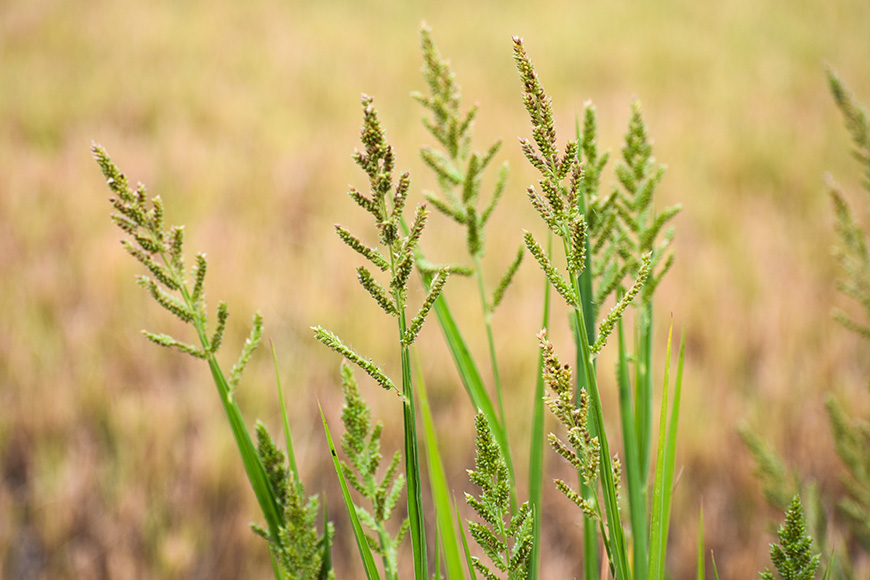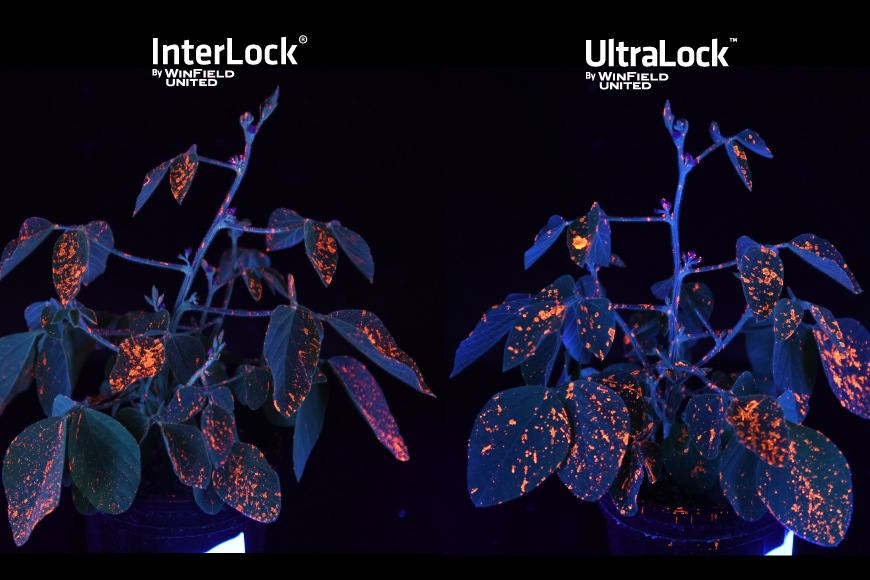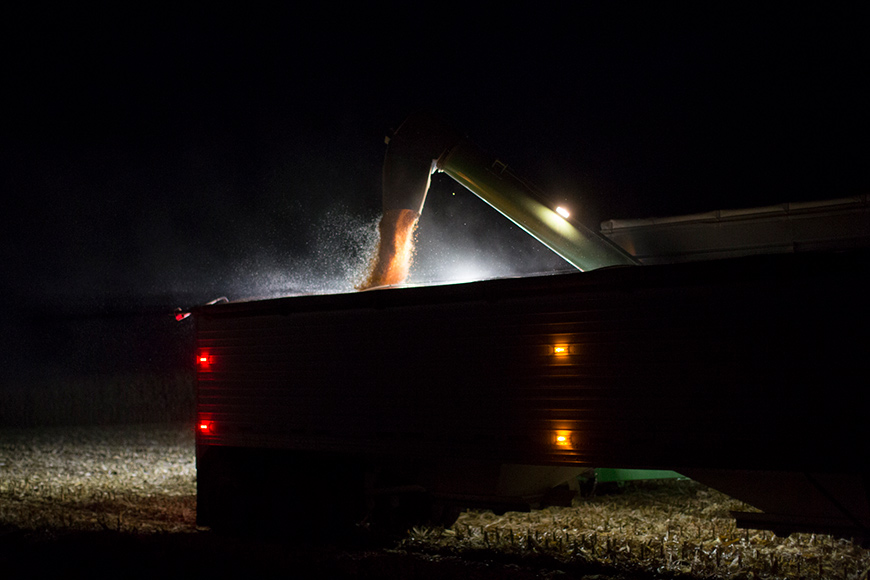5 Strategies for Effective Grass Weed Control

Broadleaf weeds like Palmer amaranth, lambsquarters and ragweed often get a lot of attention from growers in the South but managing grass weeds is equally critical for maintaining yield potential. Compared to broadleaf weed management, there can be some additional challenges to overcome to get effective grass weed control. Here are some tips to help you this season.
If you’re using a phenoxy herbicide like 2,4-D or dicamba in the tank mix for broadleaf control, plan to increase the grass herbicide rate by 30% to overcome antagonism for effective grass weed control.
If you’re using multiple herbicides in your tank mix, you’ll want to ensure you have effective adjuvants for each of those tank-mix partners. With glyphosate in short supply this season, you may be looking at optimizing applications like clethodim herbicide for grass control. An effective oil like StrikeLock® adjuvant is required with clethodim to achieve adequate weed control.
Select the right nozzles
Improve weed control by selecting appropriate nozzles based on the herbicides you are applying. The spray nozzle size determines droplet size, which impacts spray coverage.
Increase spray volumes
When grasses are small, I recommend increasing the spray carrier volume. If you usually spray 10 gallons per acre, increasing spray volume to 15 gallons per acre can help improve spray coverage.
Follow label rates
It may be tempting to cut herbicide application rates, especially this season with product availability in question. This risky spray practice leads to reduced herbicide efficacy and promotes weed resistance. Follow the label, and for intense weed pressures, move toward higher application rates to get adequate control.
For more information about grass weed management, contact your WinField® United retailer.
1 Trials at 13 Answer Plot locations and 2 Product Development locations.
All photos are either the property of WinField United or used with permission.
© 2022 WinField United. Important: Before use always read and follow label instructions. Crop performance is dependent on several factors many of which are beyond the control of WinField United, including without limitation, soil type, pest pressures, agronomic practices and weather conditions. Growers are encouraged to consider data from multiple locations, over multiple years and to be mindful of how such agronomic conditions could impact results. UltraLock, StrikeLock and WinField are trademarks of WinField United. All other trademarks are the property of their respective owners.
1. Know your weed profile.
The first step to adequate grass weed control is identifying what you’ve got in your fields. Scout often and keep detailed records of what you find. Grass weeds can be tough to differentiate because of their similar features, so bring along your agronomist to help you classify the weeds in your fields. Common winter annual grasses include annual bluegrass and Italian ryegrass, while barnyard grass and broadleaf signalgrass are summer annuals that will emerge once soils warm in the spring.2. Start clean.
It’s much easier and more cost-effective to eliminate weeds when they are small. A solid burndown herbicide application that includes residual products can help keep grasses from emerging in season. Don’t rely only on glyphosate for grass weed control. Product availability may be in question this season, and some grass weeds are developing resistance to glyphosate, requiring multiple modes of action for adequate control.If you’re using a phenoxy herbicide like 2,4-D or dicamba in the tank mix for broadleaf control, plan to increase the grass herbicide rate by 30% to overcome antagonism for effective grass weed control.
3. Use the right adjuvants.
It can be challenging to achieve adequate spray coverage on early grass weeds because of their small size, especially compared to broadleaf weeds, which have more leaf surface area to capture herbicide spray. Adding a deposition aid product like InterLock® or UltraLock™ adjuvant to the tank mix can enhance leaf coverage for improved weed control. UltraLock improves spray deposition and provides up to 20% more leaf coverage than other drift reduction agents, allowing more product to be intercepted by the plant.1If you’re using multiple herbicides in your tank mix, you’ll want to ensure you have effective adjuvants for each of those tank-mix partners. With glyphosate in short supply this season, you may be looking at optimizing applications like clethodim herbicide for grass control. An effective oil like StrikeLock® adjuvant is required with clethodim to achieve adequate weed control.
4. Tighten up your spray practices.
Poor spray practices can limit your weed control program’s effectiveness even if you’re using the best products. Ensure you get the most from your crop protection investment by following these best spray practices.Select the right nozzles
Improve weed control by selecting appropriate nozzles based on the herbicides you are applying. The spray nozzle size determines droplet size, which impacts spray coverage.
Increase spray volumes
When grasses are small, I recommend increasing the spray carrier volume. If you usually spray 10 gallons per acre, increasing spray volume to 15 gallons per acre can help improve spray coverage.
Follow label rates
It may be tempting to cut herbicide application rates, especially this season with product availability in question. This risky spray practice leads to reduced herbicide efficacy and promotes weed resistance. Follow the label, and for intense weed pressures, move toward higher application rates to get adequate control.
5. Take care of volunteer corn.
Volunteer corn can be just as detrimental to yield potential as other weeds. ACCase inhibitors, including DIM and FOP herbicides, are good options for controlling volunteer corn. Ensure that you choose an herbicide based on the size of the volunteer corn. If you’re using clethodim, you’ll need to add a crop oil for effective weed control.For more information about grass weed management, contact your WinField® United retailer.
1 Trials at 13 Answer Plot locations and 2 Product Development locations.
All photos are either the property of WinField United or used with permission.
© 2022 WinField United. Important: Before use always read and follow label instructions. Crop performance is dependent on several factors many of which are beyond the control of WinField United, including without limitation, soil type, pest pressures, agronomic practices and weather conditions. Growers are encouraged to consider data from multiple locations, over multiple years and to be mindful of how such agronomic conditions could impact results. UltraLock, StrikeLock and WinField are trademarks of WinField United. All other trademarks are the property of their respective owners.




